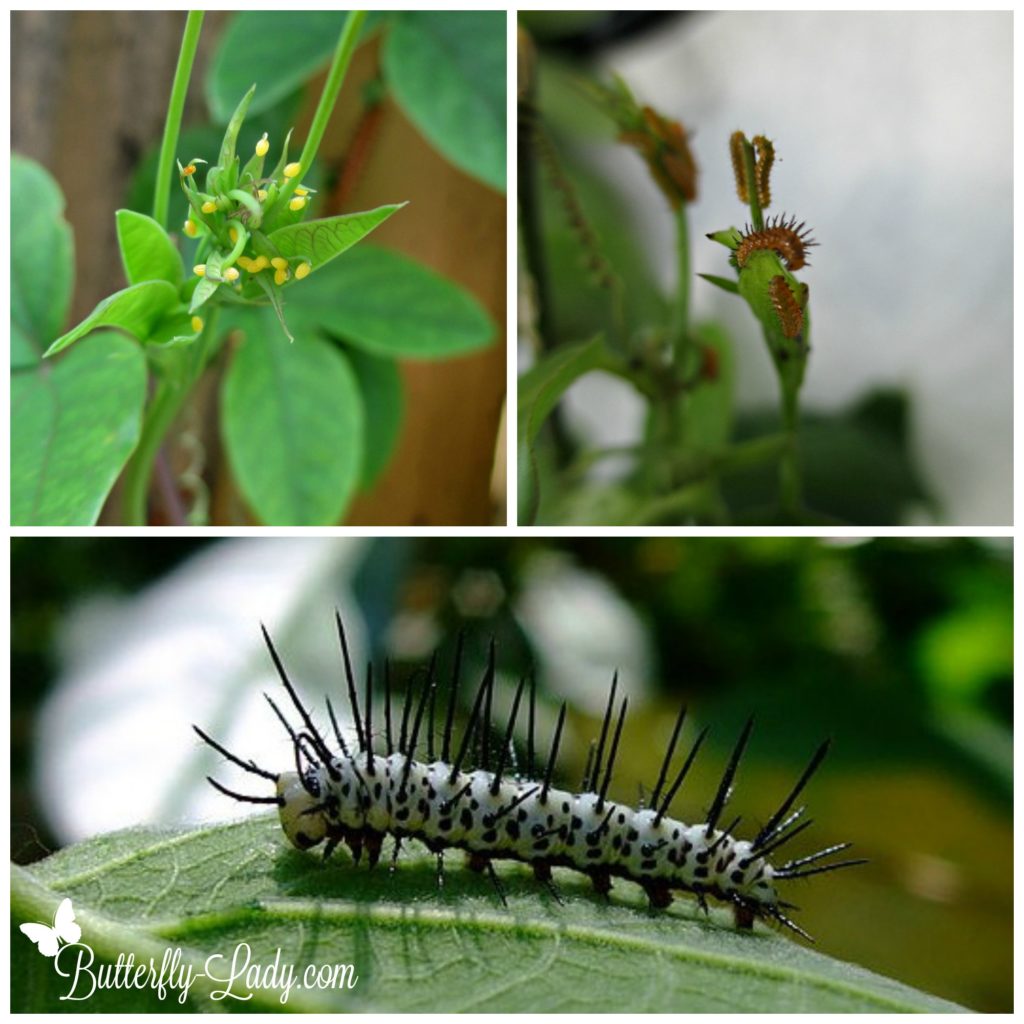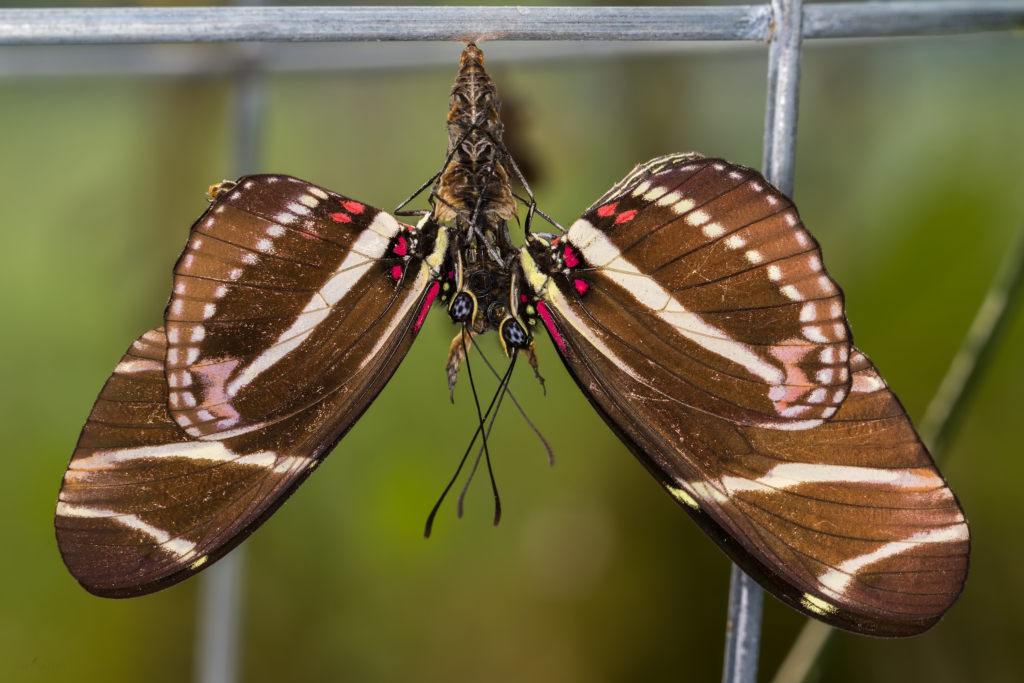“Do you have a favorite butterfly?” I often get asked this question. I love all butterflies but I have to say that the Zebra Longwing (Heliconius charithonia), has always been my favorite. These graceful butterflies hold a special place in my heart because they have unique behaviors that distinguish them from other butterflies.

Most butterflies and moths rely on sugar-laden nectar or fruit to provide the energy they need. Zebra Longwings not only sip nectar from flowers but they feast on pollen. Pollen contains much more protein than can be found in normal butterfly diets. The extra nutrients allow these Zebra Longwings to lay more eggs and to live as long as six months as adults, rather than the few weeks most butterfly species live.

Another unique characteristic of these butterflies is that they roost in large groups at night. These communal colonies can range from a few individuals to 30 butterflies or more. Roosting together provides protection from predators and retains warmth. The butterflies return to the exact same spot to settle down every night. Groups have a social hierarchy that allows the oldest butterflies to pick the best sleeping spots before the others bed down around them. The older butterflies of the group also give the younger ones a nudge to get going in the mornings.

Apparently, these delicate butterflies memorize locations of their preferred flowers on which they feed and plan the most efficient route by which to visit their nectar and pollen sources. I observed this behavior one summer in my Florida garden. I planted various flowers in containers along the wooden pool deck in the backyard. The butterflies’ roost was located in an oak tree about 75 feet away. Each morning, around 10:00, they would leave the roost and fly toward my garden. They began feeding on Mexican sunflowers planted along the south side of the deck and then moved north visiting each container of flowers in the order they were placed on the deck. They ended up feeding on the zinnias, which were planted in rows, traveling down the row of flowers. From there they flew out into the fields nearby where Maypop (Passiflora incarnata) and Corkystem Passionflower (Passiflora suberosa) grew wild.

Female Zebra Longwings lay their eggs on Passion Vines (Passiflora spp.), but their favorite seems to be Corkystem Passionflower and Maypop (Passiflora incarnata). The females deposit their eggs on the tendrils and the tip of the leaves, usually in clusters. In the first few days, the caterpillars are gregarious, but they quickly break out to feed on their own. Passion vines contain toxic compounds that are ingested by the caterpillars making the caterpillars, as well as the adult butterflies, a poisonous meal for predators. The white or yellow stripes and spots on the adults’ wings and body serve as a warning signal to potential predators of the butterflys’ unpalatable and poisonous nature. These bright, contrasting warning colors are known as aposematic coloration.

A few hours before eclosion (emergence from chrysalis), females release a pheromone that attracts males. As a female gets ready to emerge from her chrysalis, males will begin to swarm around her, jostling and flapping wings to push each other aside. The winner of this scuffle mates with the female before allowing her time to expand and dry her wings. The male passes a nutrient-rich spermatophore to the female which reduces her attractiveness to future mates. Apparently, this mating behavior, referred to as ‘pupal rape‘, is beneficial to the survival of the species by allowing the female to go straight to laying eggs, not having to exhaust energy in ritualistic mating practices.

I find Zebra Longwings so fascinating. I feel so blessed when these beautiful, striped butterflies grace my garden!
